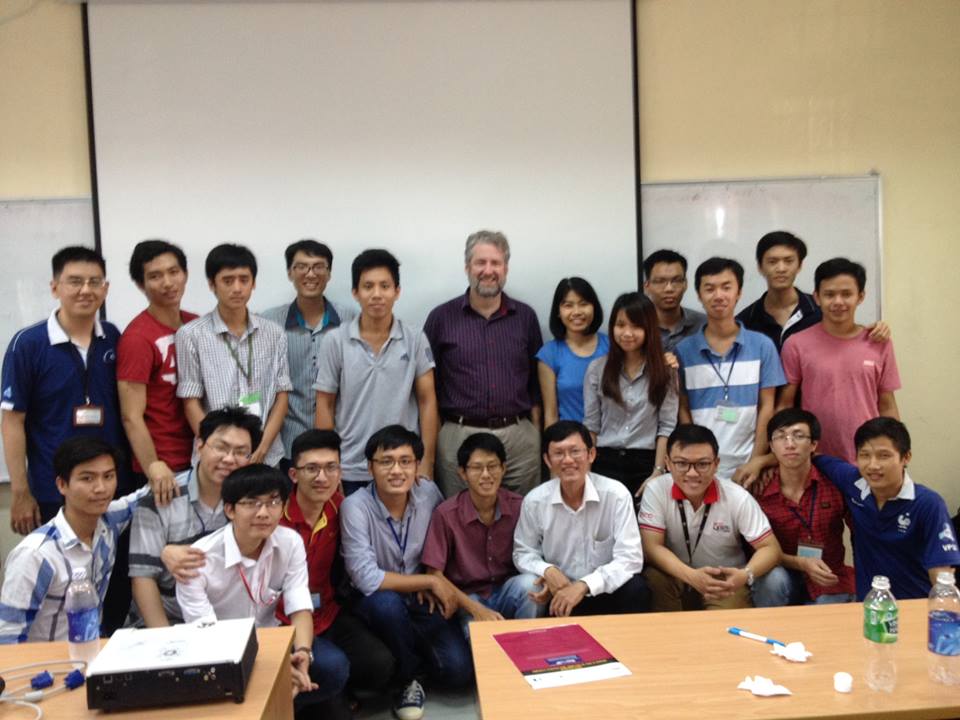On November 19, 2016, a group of engineering students from Ho Chi Minh University of Technology (HCMUT) engaged in a dynamic classroom approach: Project Based Learning (PBL). By using this learning method, students can acquire deeper knowledge about real-world problems, as well as participate in solving complex questions, real-world problems or challenges. It is a comprehensive perspective focused on teaching by engaging students in the investigation. Within this framework, students pursue solutions to nontrivial problems by asking and refining questions, collecting and analyzing data, making predictions, designing experiments, communicating their ideas to others and drawing conclusions.

David Benson (back 6th from left) and Professor Dang Thanh Tin (bottom 4th from right), pose with Professor Tin’s class after the PBL presentations.
Professor Dang Thanh Tin, recently applied the PBL method in his classrooms at HCMUT. In this class, Tin grouped three to four students into a team. The students were given a "driving question" to answer relating to health measurement needs then directed to create develop a sensor based solution using Arduino. Student projects focused on measurement challenges such as heart rate and respiration rate of human subjects. During the course of the project the students were required to create a Work Breakdown Structure (WBS) to divide the project into subtasks with concrete functions. Tin’s students also generated Gantt charts to develop timelines for project components and testing. David Benson, HEEAP Academic Director, visited Tin’s classroom to observe the final presentations of the student’s deployment processes. He also had the opportunity to see their mid-project presentations for PBL and review their WBS and Gantt Charts.
Impressed to see new learning techniques implemented successfully in the Vietnamese classroom, Benson said, “PBL creates an environment where students are free to explore problems by themselves, without being fed information from a textbook or lecture. The knowledge and engineering skills the students gained through this process stood out in their presentations. I was especially impressed how the students worked as teams to identify different project tasks and requirements and how they used the WBS to plan their approach to building their prototypes.”
BY LY NGUYEN

